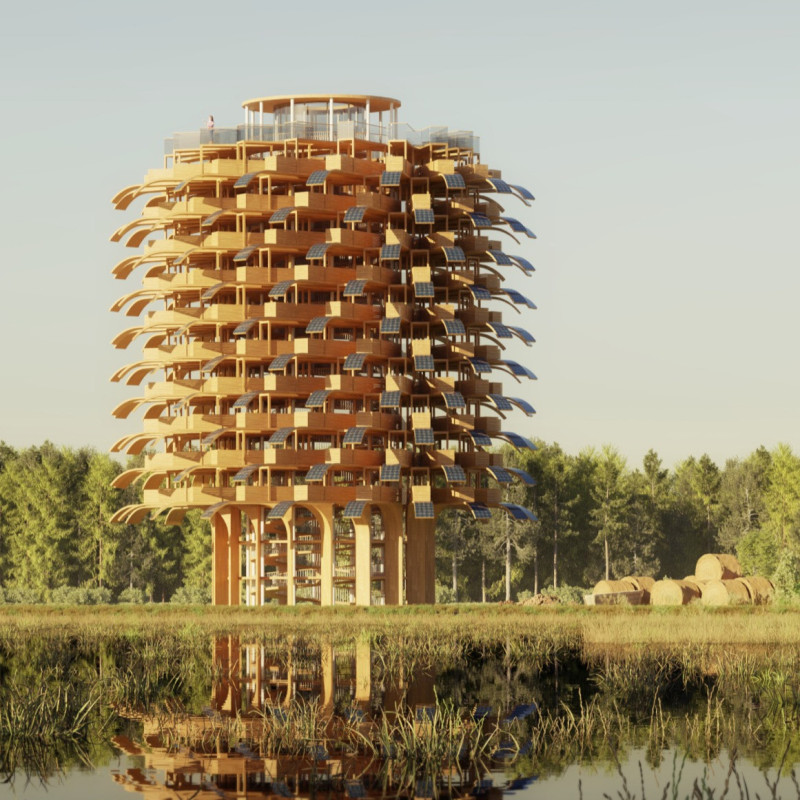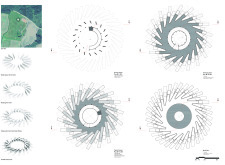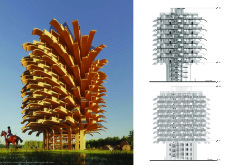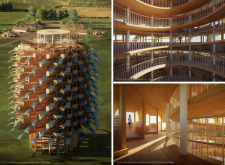5 key facts about this project
"The Village Tree" is a concept design for an observatory tower located at Kurgi Farms in the North Latvia Biosphere. This structure embraces a vertical "cellular" design that connects closely with its natural environment. The aim is to provide opportunities for both individual and group viewing experiences. Through its thoughtful design, it encourages interaction with the landscape.
Design Concept
At the heart of "The Village Tree" is a circular ramp that leads to an orbicular corridor. This corridor connects a series of modular observatory cells, which are stacked and rotated to create different perspectives at varying heights. Each cell has projecting balconies that extend outward, allowing visitors to step closer to the surrounding views. This design minimizes visual barriers, bringing the outside in.
Sustainability Integration
Sustainability is a key aspect of the design, with a strong focus on net-zero principles. The top of the tower features a sky deck and an all-weather glass pod, offering expansive views of the beautiful landscape. By incorporating sustainable practices, the design not only reduces its environmental impact but also enhances the connection between the visitors and the natural setting.
Material Composition
The materials used in "The Village Tree" include composite steel and wood assemblies. These materials contribute to both the strength and aesthetic quality of the observatory. Prefabricated cells can be assembled on-site efficiently, creating a solid vertical structure that works alongside the central steel core. This structure provides stability and serves the overall function of the tower.
Final Design Detail
The form of "The Village Tree" echoes shapes found in nature, blending the building with its surroundings. The circular corridor acts as a path for visitors and also frames the views outside. As people move through the space, they encounter new aspects of the stunning landscape. Each step invites exploration, encouraging visitors to engage with the environment in a meaningful way.






















































